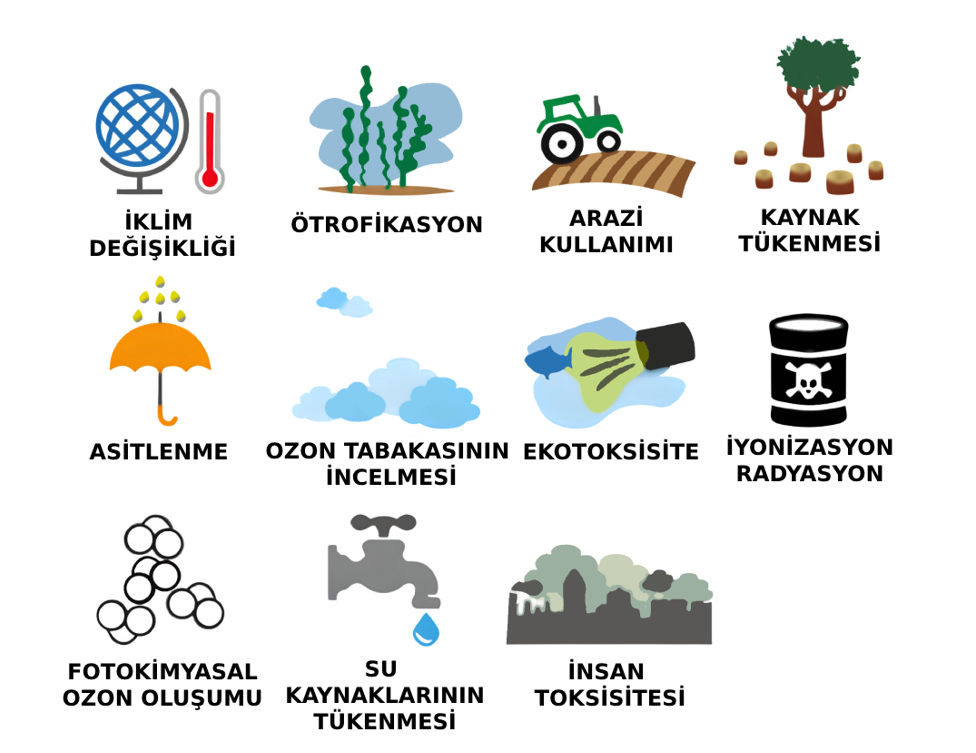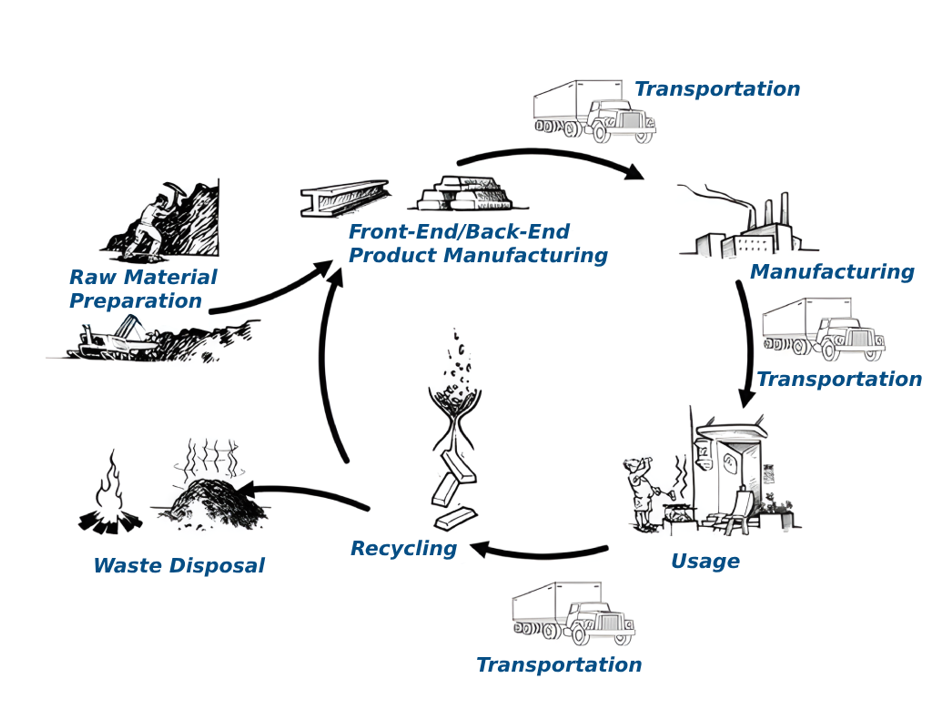Life Cycle Analysis and Project Impact in European Union Fund Programs
Before providing information on what Life Cycle Analysis and Project Impact in European Union Fund Programs is, let’s talk about what Life Cycle Analysis (LCA) is.
Life Cycle Analysis is a methodology used to assess the environmental impacts and performances of products and services. These studies encompass the environmental effects arising throughout the entire life cycle of a product or service. The holistic approach of LCA provides companies aiming to develop sustainability policies with a strategic examination.

The first stage of LCA is Identification, where the scope of the analysis is defined, and the data collection process is planned. In the step of Goal and Scope Definition, the objectives and scope of LCA are determined, parameters for evaluating environmental impacts are identified, system boundaries are defined, and the focus is clarified. In the third step, Data Collection, resources used throughout the life cycle of the product or service are gathered, focusing on the supply chain, production, distribution, use, and disposal stages. These data form the foundation of the analysis. The Assessment step is where collected data is transformed into various environmental impacts, evaluating effects such as greenhouse gas emissions, water usage, and energy consumption. This stage is used to determine the significance of environmental impacts.
Finally, in the Interpretation step, the results of the analysis are interpreted, allowing for strategic decisions related to sustainability. The effects of different scenarios and strategies on environmental impacts are evaluated. Among the advantages that LCA provides to companies are strategic management, competitive advantage, product design and improvement, and legal compliance. These advantages enable companies to become more competitive and environmentally friendly by reducing environmental impacts and adopting sustainability strategies.
The LCA studies encompass five fundamental stages: raw materials, manufacturing, transportation, consumption, and end-of-life. A detailed examination of these stages is crucial for understanding the environmental impacts of a product or service. LCA has three different types: Cradle to Cradle, Cradle to Grave, and Cradle to Gate, each covering a specific part of the life cycle.

Among the advantages provided by LCA studies are:
- Compliance with regulations
- Identification of potential risks
- Opportunities for product development
- Efficient use of resources
- The ability to communicate effectively with stakeholders
These studies enable companies to achieve sustainability goals, gain a competitive advantage, and document their environmental performance.
The European Commission has introduced Life Cycle Assessment (LCA) as the best framework for assessing environmental impacts, with a focus on LCA. The European Platform on Life Cycle Assessment (EPLCA), developed by the JRC and implemented in collaboration with DG-Environment, aims to support community policies and business by providing a reference point for the data and methods needed to implement LCA-based approaches. However, the lack of consistent and quality-assured life cycle data and studies poses a challenge that hinders the broader use of LCA, despite its need. The Roadmap proposed by the European Commission aims to strategically position EC policy support activities to enhance environmental sustainability. The first scenario involves minor changes in the current resource situation, while the second scenario envisions an approach requiring additional resources and efforts. With this scenario, the Platform could become a unique reference point for all life cycle-based activities in the EU, facilitating interaction among stakeholders, policymakers, and implementers, and creating synergies for data exchange between the European Commission and other EU institutions.
Life Cycle Assessment (LCA) provides a comprehensive perspective for assessing the environmental impacts of plastic products through projects conducted in various significant areas. The Plastic LCA, Life Cycle Assessment of Alternative Feedstocks for Plastic Production project, aimed to systematically evaluate the environmental impacts of innovative materials that can be used as alternatives to fossil resources. The goal was to develop a better understanding of sustainable plastic production. This project sought to create a robust LCA methodology to assess the life cycle impacts of plastic products derived from various feedstocks and to test this method in practical applications.
On the other hand, the Consumption Footprint, Assessing the environmental impacts of EU consumption, has focused on determining the environmental impacts of sustainable consumption habits. It aims to promote sustainable consumption practices by developing indicators and methods to assess the environmental impacts of various consumption areas within the EU. This project aims to contribute to achieving the EU’s environmental policy goals by emphasizing the role of consumers in adopting more conscious and sustainable consumption habits.
Life Cycle Analysis plays a significant role in various funding programs of the European Union, as these analyses are a critical tool for assessing the impacts of sustainability-focused projects and strengthening the goal of leaving a more sustainable world for future generations. The EU’s LCA-focused projects foster collaboration between sectors by promoting innovation and increasing environmental awareness, contributing to a sustainable future. These projects reinforce the EU’s pioneering role by harnessing the power of LCA and leading sustainability on a global scale. Future EU funding programs can take more effective steps to optimize project impact by encouraging the adoption of LCA.
References:
Systematic Map of the Social Impact Assessment Field Ricardo J. Bonilla-Alicea and Katherine Fu * (https://www.mdpi.com/2071-1050/11/15/4106)
https://publications.jrc.ec.europa.eu/repository/handle/JRC85205
Recent Posts
- 5 Questions About the Role of Corporate Academies in Corporate Transformation
- Agile Approach in Corporate Performance Management
- Life Cycle Analysis and Project Impact in European Union Fund Programs
- Europe’s Investments and Statistics Related to Sustainability
- The Chemicals Industry & Sustainable Development Goals
